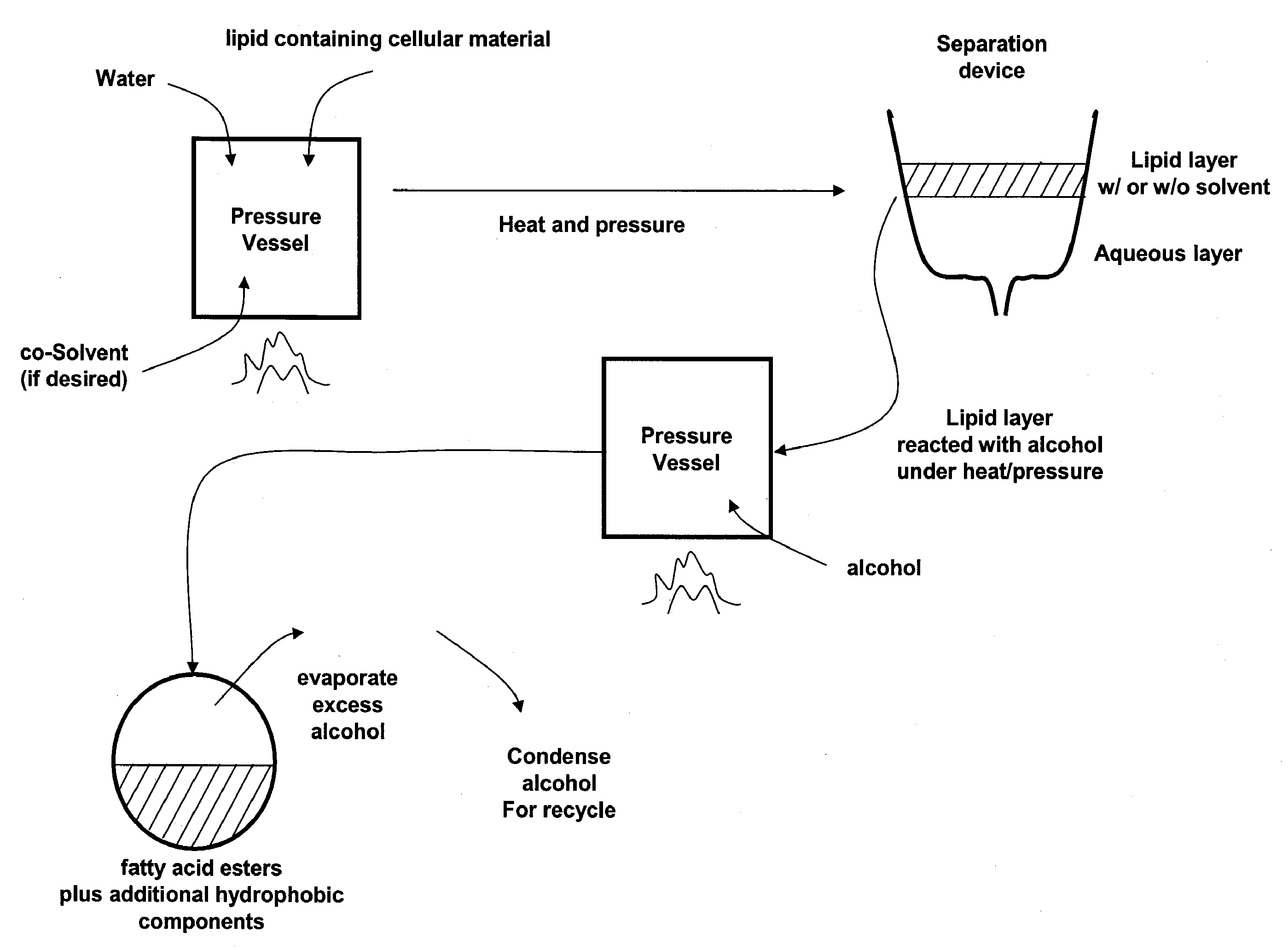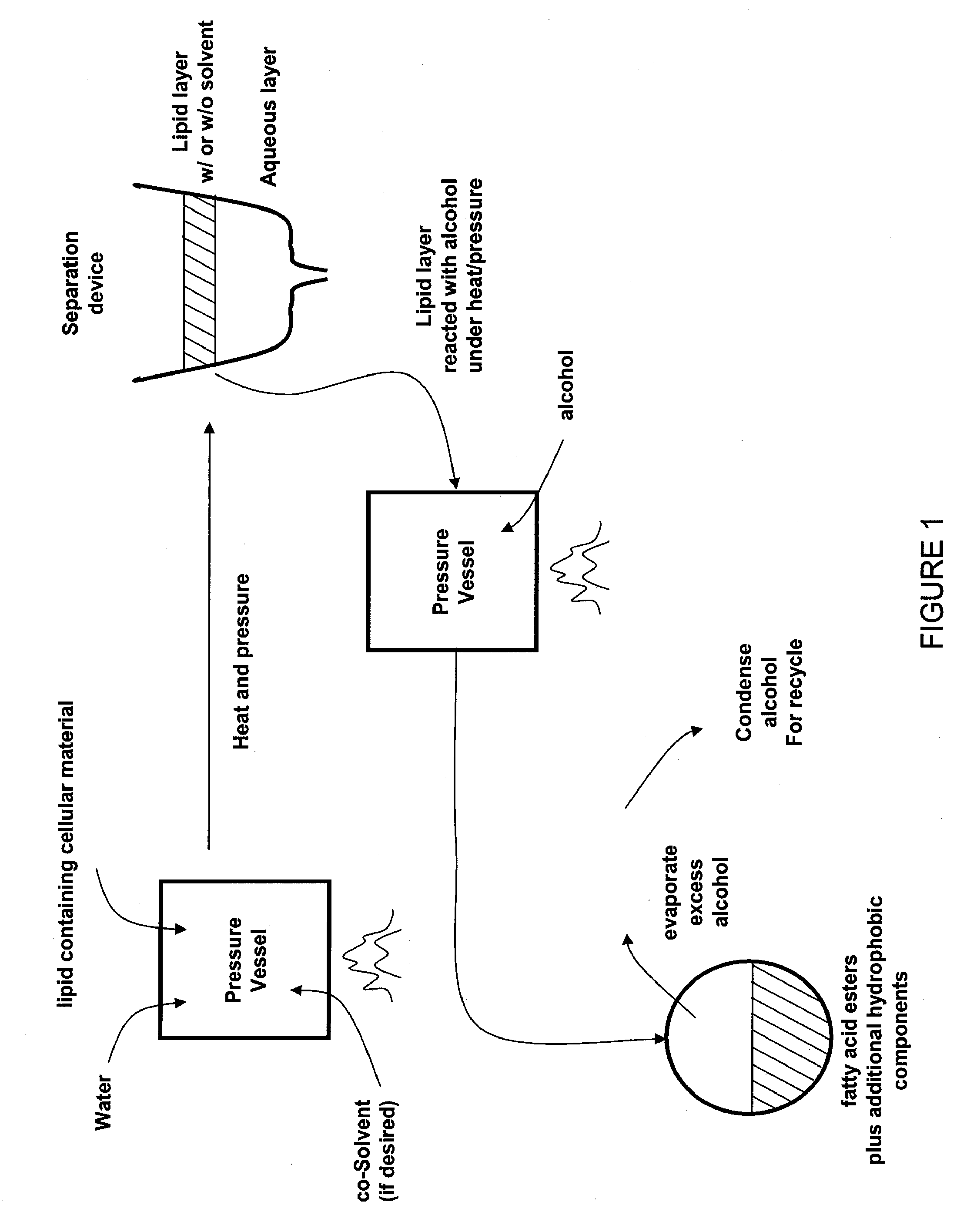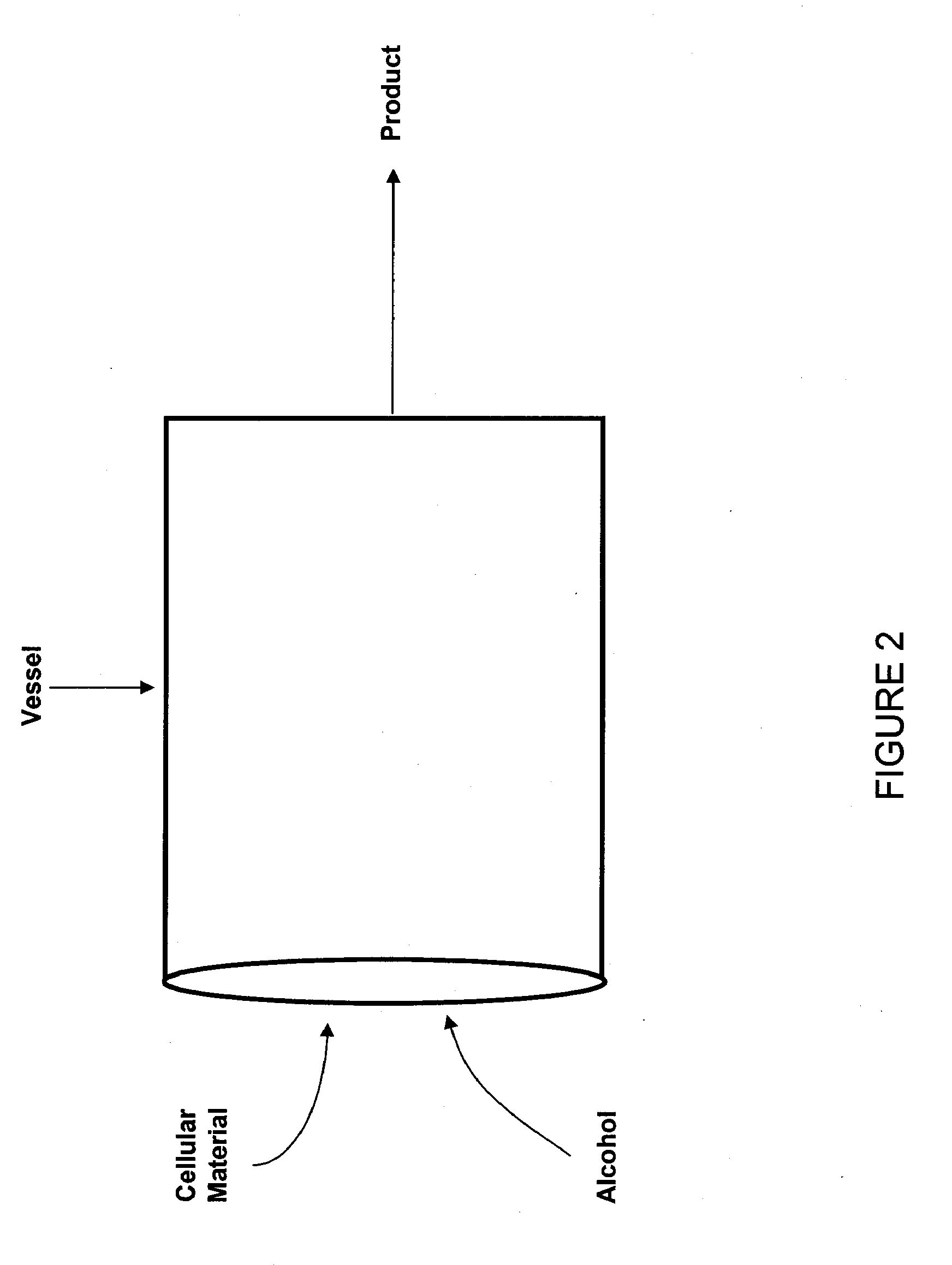Methods of robust and efficient conversion of cellular lipids to biofuels
a technology of cellular lipids and biofuels, applied in biochemical apparatus and processes, specific use bioreactors/fermenters, after-treatment of biomass, etc., can solve the problems of challenging the approach to lipid and subsequent fuel production in practi
- Summary
- Abstract
- Description
- Claims
- Application Information
AI Technical Summary
Problems solved by technology
Method used
Image
Examples
example 1
[0088]A living culture of Chlorella sp. microalgae was centrifuged at 1000 g. force for a period of 5 minutes. The resulting plug of cellular material was mixed with an equal volume of technical grade methanol, then transferred to a stainless steel cylindrical pressure vessel. The vessel was sealed with a threaded plug then placed in a 350° C. molten tin bath for 12 minutes. After cooling in a water bath for several minutes, the vessel was opened, and the brown solution within evaporated to dryness at room temperature. The residue was partitioned between hexane and water, and the hexane layer analyzed on a GCMS chromatograph. Analysis indicated the presence of predominantly C12-C20 fatty acid methyl esters, along with less than 10% of a mixture of fatty acids and monoglycerides. No unreacted triglycerides were detected.
example 2
[0089]A 20% w / v slurry of mixed species microalgae and bacteria, originating from a sewage treatment lagoon, was pumped through a length of 6 mm inner diameter 316 stainless steel tubing, which was maintained at 340° C. by means of a surrounding cast aluminum cylinder, which was heated by electrical resistance cartridges. A system pressure of 20 MPa was maintained by means of an adjustable back pressure relief valve. The pumping rate was adjusted so as to allow for 16 minutes of residence time within the heated tubing. The output from the system consisted of a brown suspension, which upon 4 hours standing, separated into a less dense layer comprised nearly entirely of fatty acids along with minor amounts of hydrophobic degradation compounds, and an aqueous layer, which consisted mainly of amino acids, carbohydrates, minerals, and heterocyclic bases.
example 3
[0090]A slurry of proprietary microalgae containing 0.58 grams (dry weight) of cells in 8 mls of water, was added, along with 3.5 mls technical grade hexane, to a stainless steel pressure vessel. The vessel was sealed and heated to 350° C. for 20 minutes, then cooled and opened. The hexane layer was combined with an equal volume of technical grade methanol, then sealed and reheated in the pressure vessel for an additional 20 minutes at 350° C. The resulting reaction mixture was dried at 80° C. until no further weight loss was noted. The residue weighed 0.24 grams and, upon GCMS chromatographic analysis, was shown to consist of a nearly pure mixture of C10-C22 fatty acid methyl esters. The yield of algae derived methyl esters was over 49%.
PUM
 Login to View More
Login to View More Abstract
Description
Claims
Application Information
 Login to View More
Login to View More - R&D
- Intellectual Property
- Life Sciences
- Materials
- Tech Scout
- Unparalleled Data Quality
- Higher Quality Content
- 60% Fewer Hallucinations
Browse by: Latest US Patents, China's latest patents, Technical Efficacy Thesaurus, Application Domain, Technology Topic, Popular Technical Reports.
© 2025 PatSnap. All rights reserved.Legal|Privacy policy|Modern Slavery Act Transparency Statement|Sitemap|About US| Contact US: help@patsnap.com



